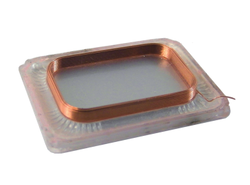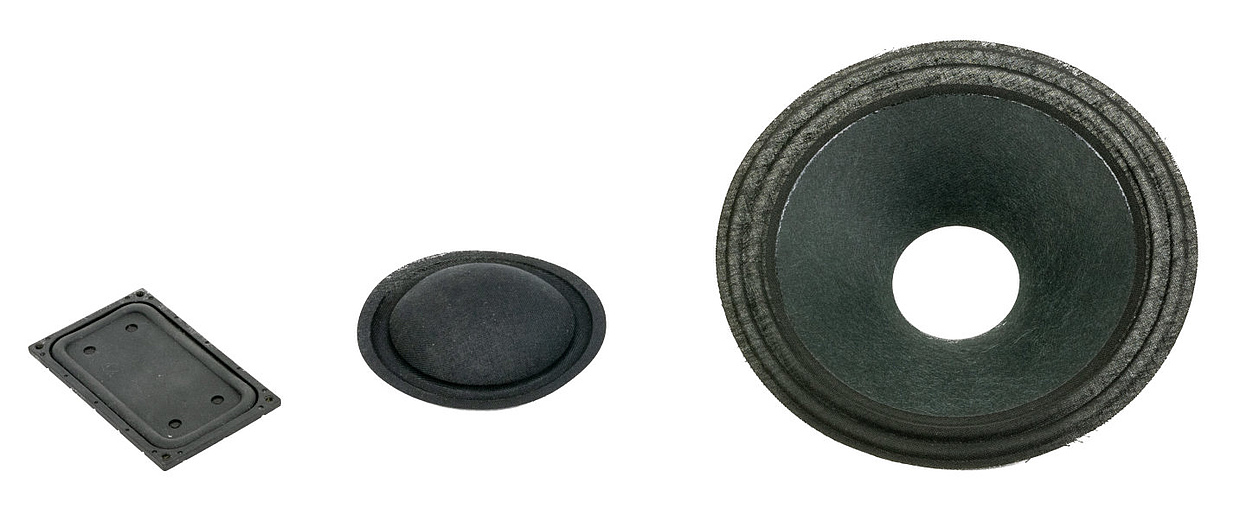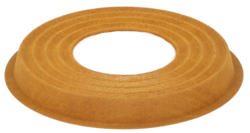Suspension part
Examples
- Spider
- Cone surround
- Dome
- Diaphragm
Applications
- Woofer, mid-range, tweeter
- Compression driver
- Micro-speakers
- Passive radiators (drones)
Application Notes
- AN 1 Optimal Voice Coil Rest Position
- AN 2 Separating Spider and Surround
- AN 3 Adjusting the Mechanical Suspension
- AN 5 Displacement Limits due to Driver Nonlinearities
- AN 13 Dynamic Generation of DC Displacement
- AN 14 Motor Stability
- AN 15 Checking for Compliance Asymmetry
- AN 26 Nolinear Stifness of Suspension Parts (Important!)
- AN 42 Tolerance of Resonance Frequency
- AN 49 Extended Creep Modeling
- AN 53 Fast Quality Control of Suspension Parts (Important!)
- AN 57 Passive Radiator Measurement (Important!)
- AN 80 Rocking Mode Anaylsis on Headphone Transducers
Particularities
Suspension parts such as spiders and surrounds are critical parts of every transducer determining the total mechanical stiffness/compliance as well as the centering the rest position of the voice coil in the gap. Additionally, the nonlinear variation of the stiffness with displacement causes nonlinear distortion and limits the maximal peak displacement. Asymmetrical suspension characteristics may even rectify the transducer vibration causing a dc component in the voice coil displacement which moves the coil away from the intended rest position. The visco-elastic properties of the suspension material may results in memory effects, such as creeping of the displacement and loss of stiffness for low frequencies or after high peak displacement. Nevertheless, the properties of most the suspenion materials highly depend on temperature humidity and vary over time.
For the above mentioned reasons traditional static, quasi-static and point-by-point (incremental) test methods cannot describe the dynamic behavior of the suspension at audio frequencies. Therefore, KLIPPEL test tools use dynamic operation and provide suitable clamping methods for the suspension part in order to provide a similar conditions like in the final product.
Challenges in the Design
- High peak displacement for small size
- Symmetrical shape of the stiffness characteristic versus excursion
- Desired soft limiting to protect the voice coil former
- Stiffness K(x=0) at rest position constant over time (ageing)
- Stiffness K(x=0) at rest position independent of peak displacement
- Suspension characteristics are independent of climate conditions
Most Important Characteristics
- Stiffness K(x=0) at rest position
- Stiffness nonlinearity K(x)
- Force-deflection curve F(x)
Critical Issues
- Asymmetrical shape of the K(x) characteristic generates dc displacement which moves the coil away from optimal rest position and generates Bl intermodulation distortion
- Stiffness K(x=0) at rest position decreases over time and may cause motor instability
Accessories
Other Related Information
W. Klippel, "Dynamical Measurement of Loudspeaker Suspension Parts", Convention Paper, 117th AES Convention, October 2004, San Francisco
Fast Quality Testing of Loudspeaker Suspension Parts
Standards
Audio Engineering Society
AES2 Recommended practice Specification of Loudspeaker Components Used in Professional Audio and Sound Reinforcement
AES-ALMA Standard test method for audio engineering – Measurement of the lowest resonance frequency of loudspeaker cones
International Electrotechnical Commission
IEC 60268-5 Sound System Equipment, Part 5: Loudspeakers
IEC 60268-22 Sound System Equipment, Part 22: Electrical and Mechanical Measurements on Transducers
IEC 62458 Sound System Equipment – Electroacoustic Transducers - Measurement of Large Signal Parameters
IEC 62459 Sound System Equipment – Electroacoustic Transducers - Measurement of Suspension Parts
Most relevant Measurements | Modules of R&D SYSTEM | Modules of QC SYSTEM |
|---|---|---|
Stiffness K(x) versus displacement x | Suspension Part Measurement (SPM) |
|
Compliance C(x) versus displacement x | Suspension Part Measurement (SPM) |
|
Force-deflection curve | Suspension Part Measurement (SPM) |
|
Effective stiffness Keff (small signal parameter) | Suspension Part Measurement (SPM) | |
Maximal peak displacement XC limited by suspension nonlinearity (C(x) decreases to 75 %) | Suspension Part Measurement (SPM) |



